Common Terms in Learning Management System
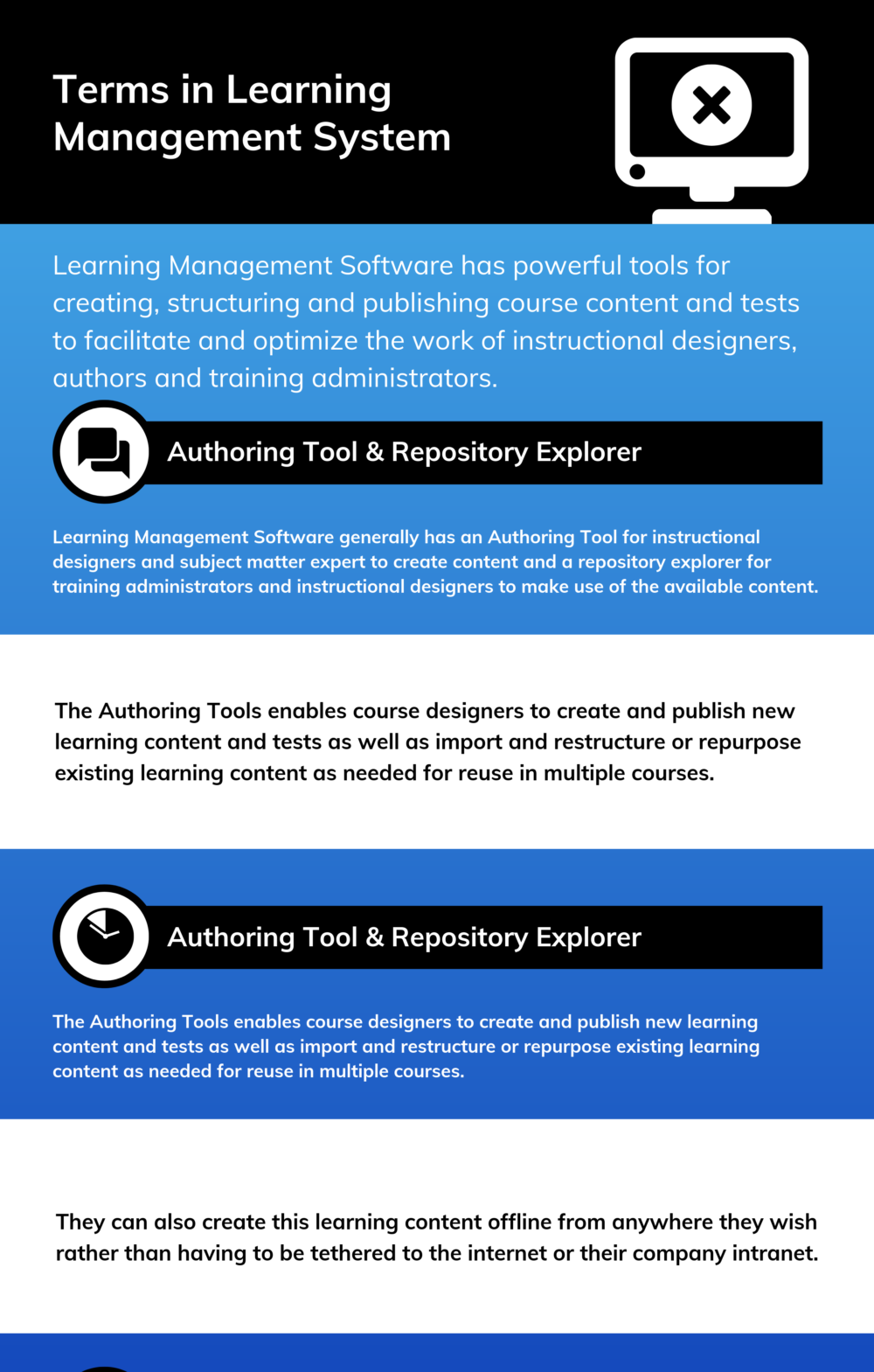
Learning Management Software has powerful tools for creating, structuring and publishing course content and tests to facilitate and optimize the work of instructional designers, authors and training administrators.
Learning Management Software generally has an Authoring Tool for instructional designers and subject matter expert to create content and a repository explorer for training administrators and instructional designers to make use of the available content.
The Authoring Tools enables course designers to create and publish new learning content and tests as well as import and restructure or repurpose existing learning content as needed for reuse in multiple courses. Rather than being required to follow a linear design, course designers have complete flexibility to create courses that will allow a learner to follow the learning path through course content that best suits their individual learning style and needs. They can also create this learning content offline from anywhere they wish rather than having to be tethered to the internet or their company intranet.
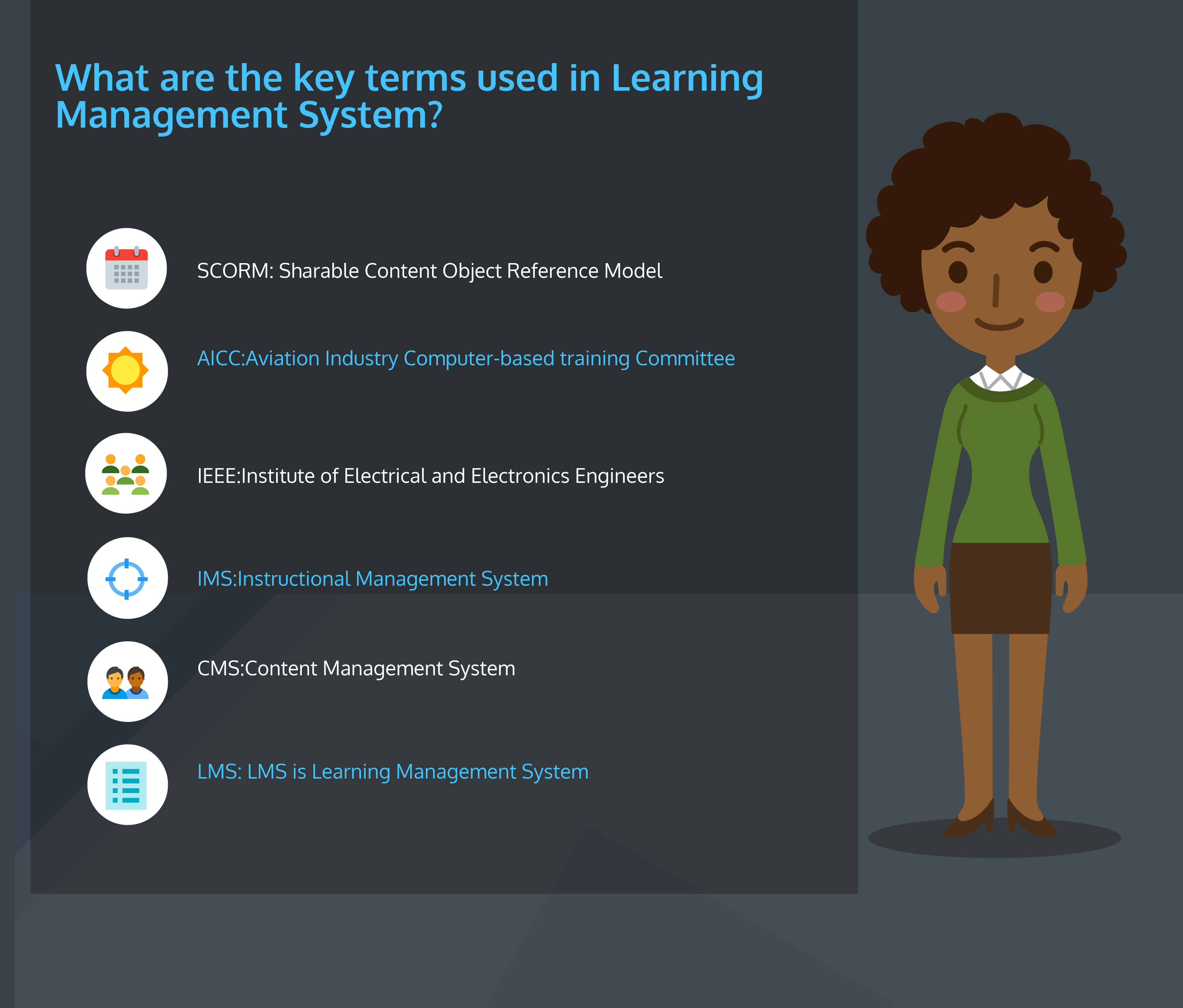
Key Terms used in Learning Management System
Here are some of the key terms used in Learning Management System:
- SCORM: Sharable Content Object Reference Model
- AICC:Aviation Industry Computer-based training Committee
- IEEE:Institute of Electrical and Electronics Engineers
- IMS:Instructional Management System
- CMS:Content Management System
- LMS: Learning Management System
- LCMS: Learning Content Management System
- Learning Object
- Learning Objective
- Meta data
- Learning Net
- Media Objects
- Instructional Elements
- Chunk
- Section 508
- Blended Learning
- CBT:Computer-based Learning
- Asynchronous Learning
- Synchronous Learning
What are the key terms used in Learning Management System?
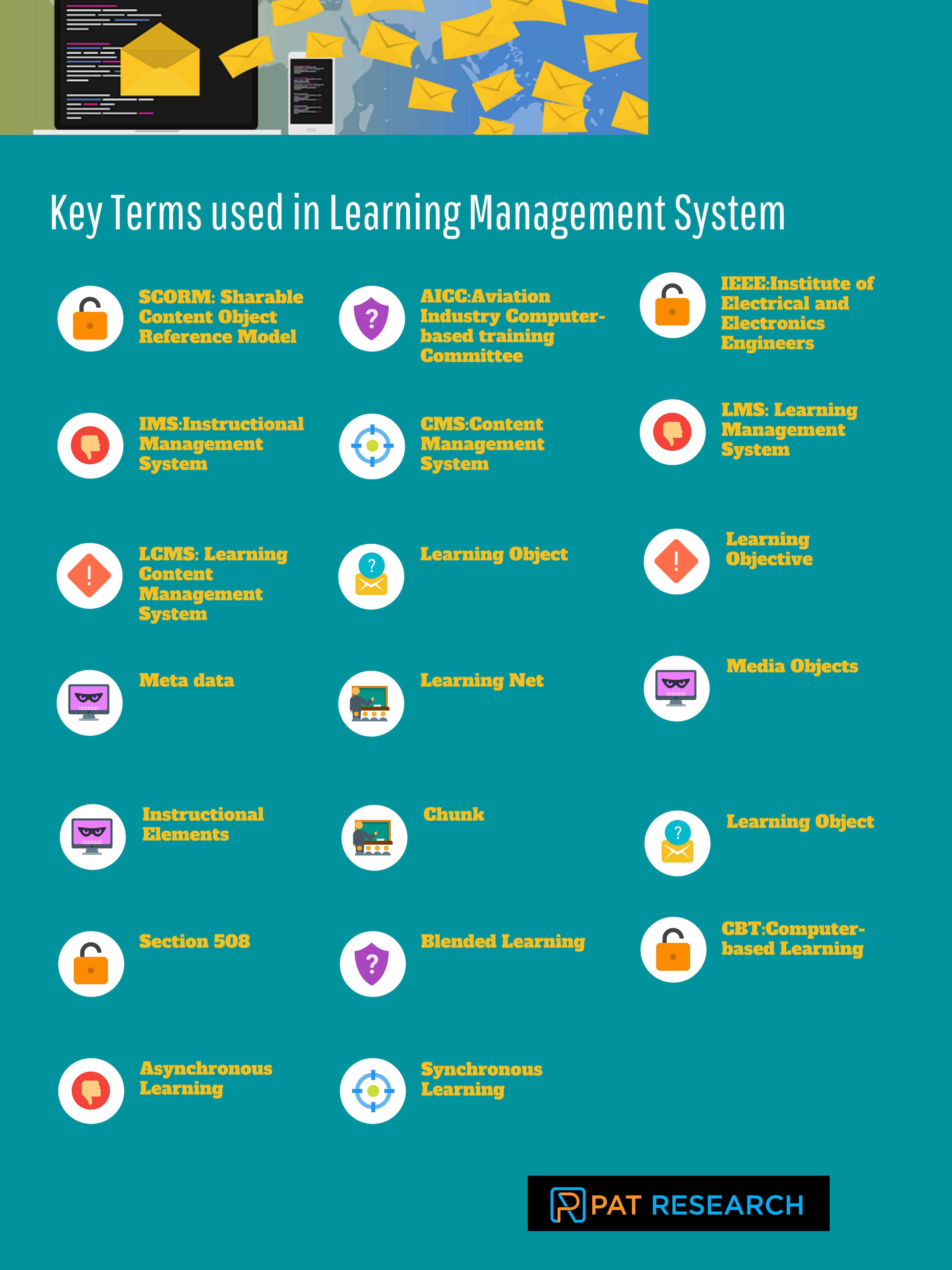
Key Terms used in Learning Management Software
- SCORM: SCORM is “Sharable Content Object Reference Model”. As organizations make significant investments in learning content, there is a strong desire to have the ability to more easily store, search, index, deploy, assemble and revise this content. SCORM is the current standard for the e-learning industry that blends specifications from multiple sources, including it’s most well known predecessor, AICC (Aviation Industry CBT Committee), to provide a comprehensive suite of e-learning capabilities that enable interoperability, accessibility and reusability of web-based learning content. Content that meets this standard is said to be “SCORM-conformant”. This standard is the result of the Department of Defense’s Advanced Distributed Learning (ADL) initiative.
- AICC: AICC is “Aviation Industry Computer-based training Committee”. An international association of technology-based training professionals that develops training guidelines for the aviation industry. AICC has and is developing standards for interoperability of computer-based and computer-managed training products across multiple industries.
- IEEE: IEEE is “Institute of Electrical and Electronics Engineers”. An organization whose Learning Technology Standards Committee (LTSC) is working to develop technical standards, recommended practices, and guides for computer implementations of education and training systems. Like AICC, they are also participating in the development of the SCORM specifications.
- IMS: IMS is “Instructional Management System” Global Learning Consortium. This is a coalition of government organizations dedicated to defining and distributing open architecture interoperability specifications for e-learning products. They are also participating in the development of the SCORM specifications.
- CMS: CMS is Content Management System. A centralized software application or set of applications that facilitates and streamlines the process of designing, testing, approving, and posting e-learning content, usually on Webpages.
- LMS: LMS is Learning Management System. It is software that automates the administration of training. The LMS should handle all sorts of training (eLearning, classroom, self study, etc.). At a minimum, it should align this training with the students, their job roles and competencies, and track the associated costs. The LMS is used to register users, track courses in a catalog, record data from learners; and provide reports to management. An LMS is typically designed to handle courses by multiple publishers and providers. It usually doesn't include its own authoring capabilities; instead, it focuses on managing courses created by a variety of other sources.
- LCMS: LCMS is Learning Content Management System. Similar to an LMS, but content-focused vs. student-focused. An LCMS is used to manage the creation, storage, use, and reuse of learning content. LCMS’s often store content in granular forms such as learning objects.
- Learning Object: A learning object is self-contained, independent, and reusable. It is a media-independent collection of information used as a modular building block for e-learning content. A learning object forms a kind of container for thematically related instructional elements. Learning objects are most effective when organized by a meta data classification system and stored in a data repository such as an LCMS.
- Learning Objective: They characterize skills and knowledge that a learner can attain by successfully working through course content or answering test questions. You can assign learning objectives to tests, test items, learning nets, and learning objects. The content player refers to an individual’s learning objective history and uses this information to adapt the course being taken to the learner’s level of knowledge.
- Meta data: Information about content that enables it to be stored in and retrieved from a database. When meta data such as copyright info, descriptions, keywords, etc. is stored on content, these identifiers are commonly referred to as metatags.
- Learning Net: Learning net is a collection of learning objects that can be used as course content. The learning objects cover a more detailed, clearly defined subject area. The learning objects are linked to one another by relations that have a functional (for example, hierarchical) or a didactical meaning (for example before, belongs to). A learning net can consist of learning objects, instructional elements and tests (macro structure). Learning nets should not consist solely of instructional elements. They are designed as containers for learning objects. Complex learning nets can contain a number of learning subnets in addition to learning objects.
- Media Objects: You can integrate graphics, screenshots, videos, and other media elements in an instructional element or test item. Media objects are reusable content that can be displayed in the internet browser.
- Instructional Elements: An instructional element is the smallest didactical unit in a learning net, whose purpose is to impart the content of a learning object.
- Chunk: (noun) A discrete portion of content, often consisting of several learning objects grouped together. (verb) To separate content into discrete portions or aggregate smaller content elements into customized configurations.
- Section 508: The section of the 1998 Rehabilitation Act that states that all electronic and information technology procured, used, or developed by the federal government after June 25, 2001, must be accessible to people with disabilities. Accessible design also benefits people with older or slower software and hardware.
- Blended Learning: Learning events that combine aspects of online and face-to-face instruction.
- CBT: CBT is Computer-based Learning. An umbrella term for the use of computers in both instruction and management of the teaching and learning process. CAI (computer-assisted instruction) and CMI (computer-managed instruction) are included under the heading of CBT. Some people use the terms CBT and CAI interchangeably.
- Asynchronous Learning: Learning in which interaction between instructors and students occurs intermittently with a time delay. Examples are self-paced courses taken via the Internet or CD-ROM, Q&A mentoring, online discussion groups, and email.
- Synchronous Learning: A real-time, instructor-led online learning event in which all participants are logged on at the same time and communicate directly with each other. In this virtual classroom setting, the instructor maintains control of the class, with the ability to "call on" participants. In most platforms, students and teachers can use a whiteboard to see work in progress and share knowledge. Interaction may also occur via audio- or videoconferencing, Internet telephony, or two-way live broadcasts.
What is Learning Management Software?
Learning Management Software has powerful tools for creating, structuring and publishing course content and tests to facilitate and optimize the work of instructional designers, authors and training administrators. Learning Management Software generally has an Authoring Tool for instructional designers and subject matter expert to create content and a repository explorer for training administrators and instructional designers to make use of the available content.
What are the key terms used in Learning Management System?
The key terms used in Learning Management System are SCORM: Sharable Content Object Reference Model, AICC:Aviation Industry Computer-based training Committee, IEEE:Institute of Electrical and Electronics Engineers, IMS:Instructional Management System, CMS:Content Management System, LMS: Learning Management System, LCMS: Learning Content Management System and many more.

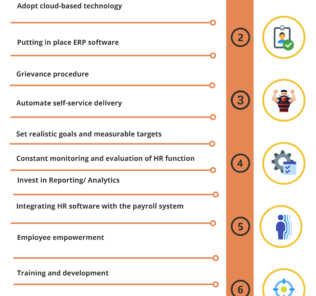
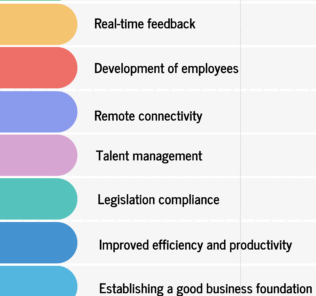
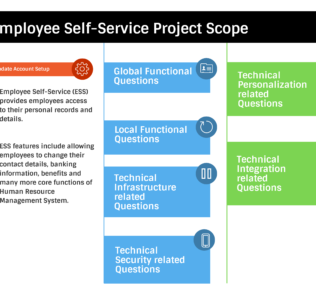
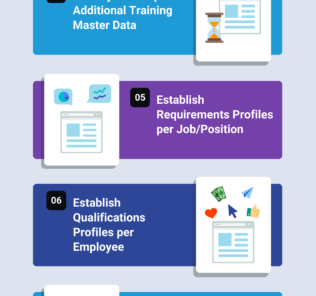

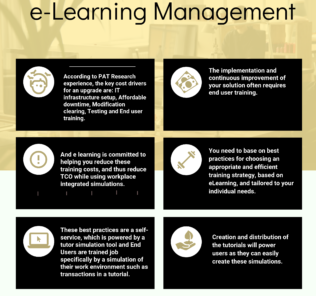




By clicking Sign In with Social Media, you agree to let PAT RESEARCH store, use and/or disclose your Social Media profile and email address in accordance with the PAT RESEARCH Privacy Policy and agree to the Terms of Use.